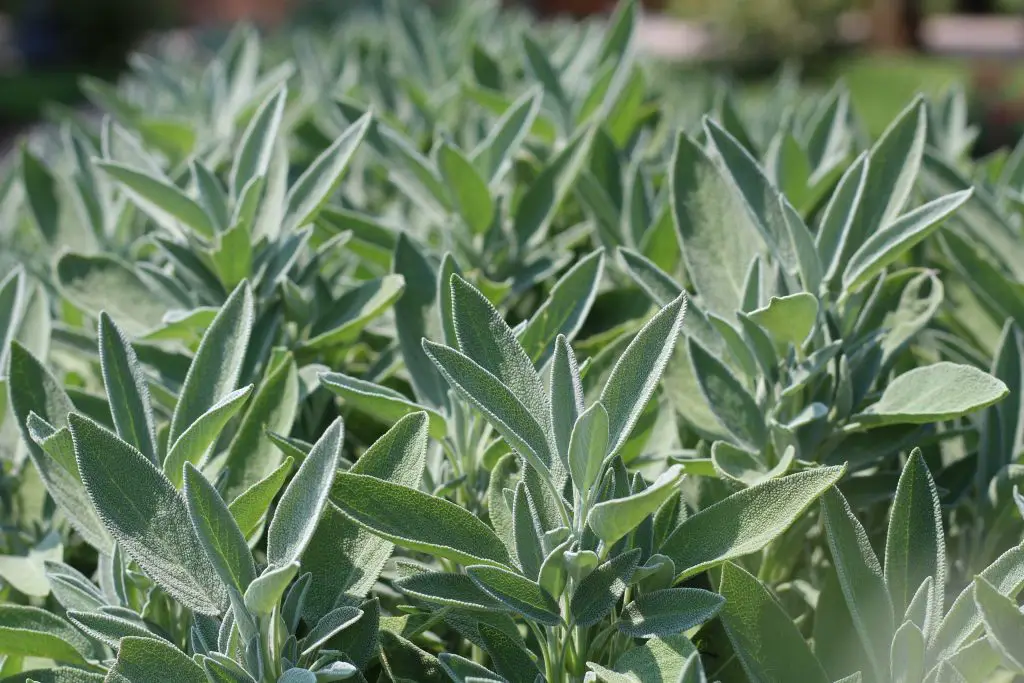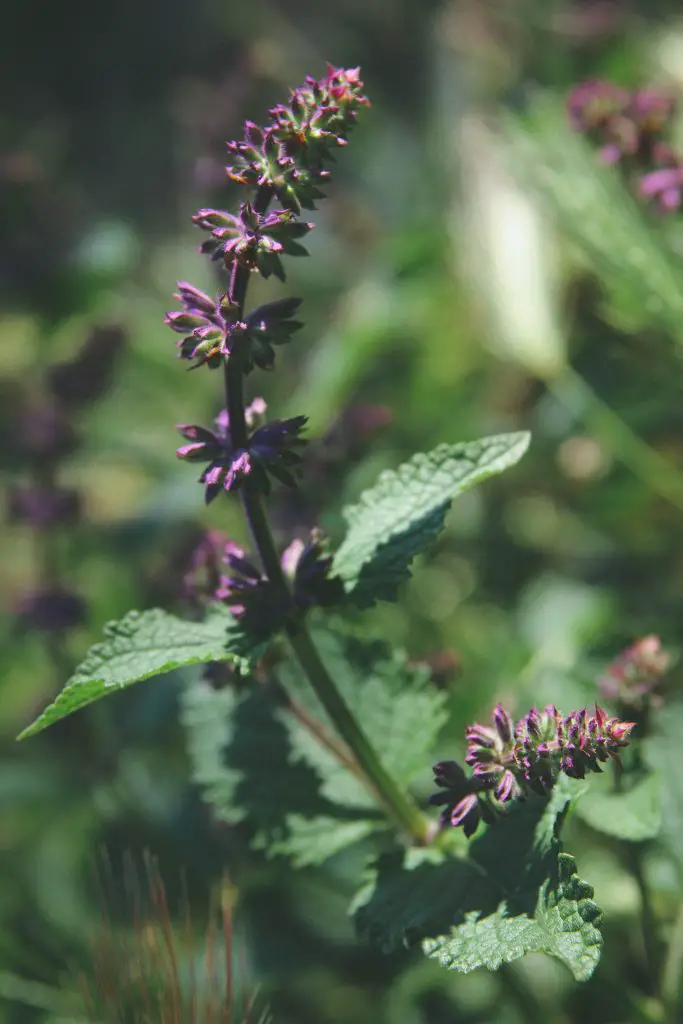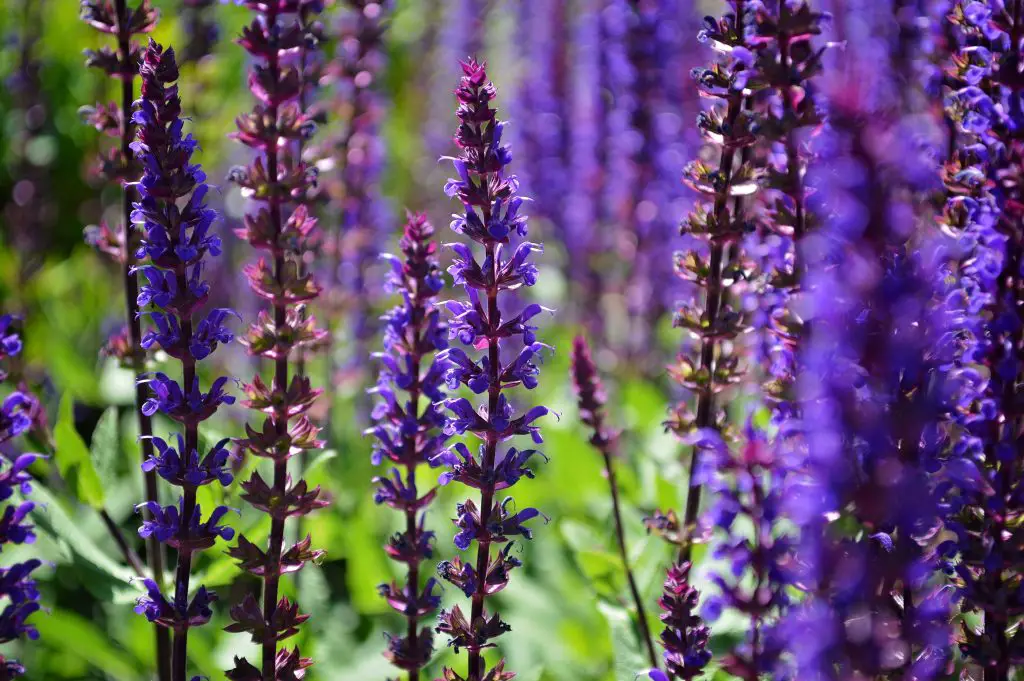Salvias are some of the most popular flowering plants grown in ornamental gardens, however, there are also some varieties that are edible varieties such as sage. The plants come in a range of shapes and sizes and can be used to great effect in ornamental gardens to provide a range of flower and foliage colors. However, if you are considering purchasing salvias one of the common questions that is asked is do salvia spread?
Salvias are plants that do not spread very readily for the most part and will remain put in the location where you plant them for the most part. As such, they generally are not considered to be invasive though they have been known to spread relatively slowly by seed the extent of this spread is unlikely to cause significant problems in your garden.
While salvias reproduce by seed some varieties send out runners that will root and grow into new plants at the point at which the runner hits the soil. But salvias do not typically spread through roots or rhizomes that are underground.

About Salvias
There are around 150 species of the Salvadora genus of herbs, shrubs, and vines native to Central and South America. They grow in tropical and subtropical regions in semi-shade and sunlight. Some grow at altitudes above 2,000 feet. Depending on the variety, they can be small or large plants with opposite or whorled leaves.
All are low-maintenance plants that require very little water or care once established. In fact, they are often referred to as “weed’s weeds” because they adapt well to almost any soil type or habitat you place them in. And because they have such a shallow root system, they spread easily too.
Our native salvias are found growing wild throughout the United States from California all the way up to Canada. There are so many varieties of salvias available for home landscaping now that it is quite common to see them growing wild here in many parts of our country. You will also find some of these plants growing wild in other countries as well; however, it is much more common in those areas than here due to their adaptability and ease of propagation from seed.

Where Is The Best Place To Grow Salvias?
The best spot for growing salvias is in well-drained, moist soil with a pH level between 6.0 and 7.0. The plant will tolerate hot and cold temperatures but does prefer warm to hot weather with enough rainfall during the growing season.
As they are flowering plants they generally prefer relatively sunny locations but will tolerate some degree of shade. However, in these shadier locations, the extent of flowering will be reduced significantly. The degree of shade tolerance will vary depending upon the specific variety that is grown.
How Long Will Salvias Survive?
Salvias have a long lifespan. Many varieties can live up to 40 years. They are very hardy plants that can withstand drought and other harsh conditions, so if you plant them in full sun, they will thrive.
However, if you do plan on planting them in full sun or in a very hot climate, be sure to keep them watered. You should also recognize that the leaves of salvias are toxic to cattle and horses. This is why it is not recommended for these animals to graze on them.
Even though the leaves are toxic and some people may be discouraged from planting salvias due to that fact, it is important for us to remember that this plant does have a lot of great benefits as well as drawbacks. Some people feel that the benefits outweigh the risks of planting them in areas where they can cause harm to their livestock.

Do Salvias Need To Be Deadheaded?
These plants don’t need to be deadheaded, but it will help you maintain a tidy appearance. If you deadhead them, it will encourage them to continue to produce flowers. However, if you are lazy like me you can leave the flowers as is and simply get a hedge trimmer to remove the flowers in a single hit at the end of the season.
At this point and time, it is also advisable to trim the plants to ensure that they maintain an attractive shape. If you see areas where the foliage is becoming sparse and the plant is becoming leggy it is best to prune the plants back hard as they will recover quickly and create a bushy appearance next season. The pruning should ideally be done at the end of the growing season when the weather is starting to cool down.
How Do You Keep Salvias From Getting Leggy?
Salvias can become relatively leggy if the plant is placed in a location where it does not get enough light. This can be a result of a structure or a large tree shading the salvia out, however, it can also simply be because the plants are competing with too many other shrubs for nutrients and light.
To prevent the plant from becoming too leggy it is important to remove anything that is going to obstruct light if you do not do this any pruning that you do will not fix the problem because the plant will continue to look for the light when it regrows.
As mentioned above salvias will respond well to pruning in most cases which means that you can easily reshape the plants without too many problems if the growth gets out of hand. The plants can be cut back extremely hard and they will respond vigorously with new growth when the weather is warm enough.
I hope you found this article useful and have great success growing your salvias at home in your own garden. If you have any additional comments or questions please leave them in the section below.
Relevant Articles
Are Daffodils Edible? Are They Safe To Eat?
Do Deer Eat Geraniums? And How To Protect Them
Do Deer Eat Impatiens? How To Protect Them
